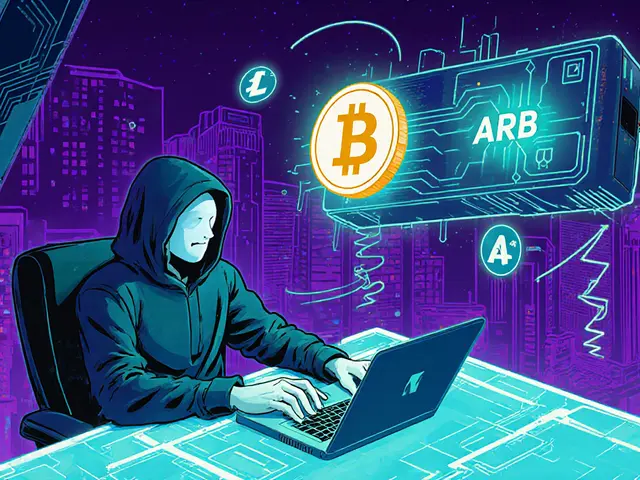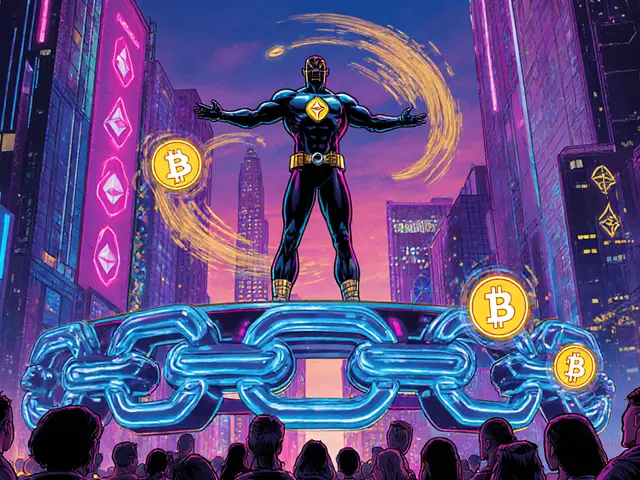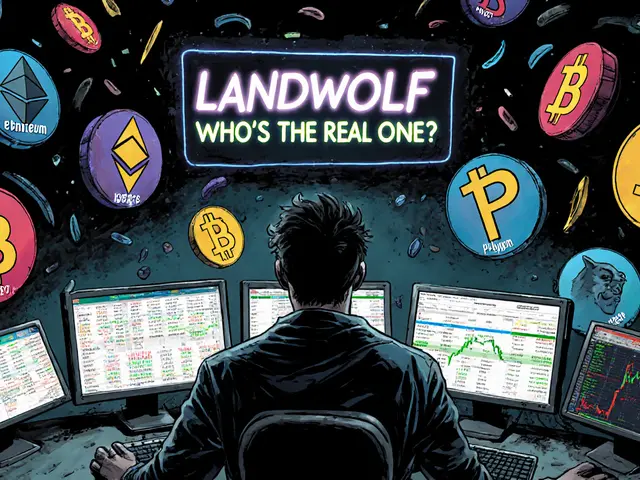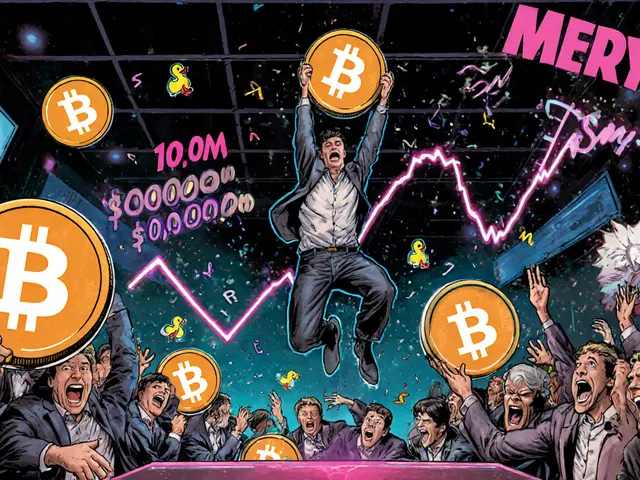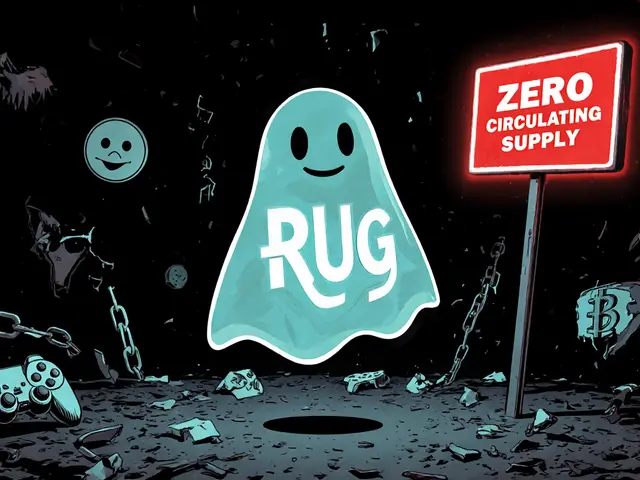- Home
- Cryptocurrency
- Centralized vs Decentralized Exchanges: Complete Comparison 2025

Centralized vs Decentralized Exchanges: Complete Comparison 2025
CEX vs DEX Decision Tool
How do you currently acquire cryptocurrency?
What is your experience level with cryptocurrency?
What types of trading do you plan to do?
How important is user support to you?
What is your priority?
Where are you located?
Why this recommendation?
When you want to trade cryptocurrency, you’re faced with a choice that shapes everything: centralized exchange or decentralized exchange. It’s not just about where you buy Bitcoin or Ethereum-it’s about who controls your money, how fast trades happen, and what happens if things go wrong. In 2025, over 87% of all crypto trading still happens on centralized platforms. But decentralized exchanges are growing fast, and for good reason. Understanding the difference isn’t just technical-it’s personal.
How Centralized Exchanges Work (And Why They’re Still Dominant)
A centralized exchange (CEX) operates like a bank for crypto. You deposit your coins into an account they control. When you trade, they match buyers and sellers behind the scenes using their own servers. You never directly interact with the blockchain. That’s why it feels so familiar: sign up, verify your ID, deposit fiat, trade, withdraw. It’s simple. Platforms like Binance, Coinbase, and Kraken handle tens of thousands of trades per second. Their order books are deep-Binance moved over $79 billion in spot volume in Q1 2025 alone. That means tight spreads, fast execution, and minimal slippage. If you’re trading large amounts of Bitcoin or Ethereum, a CEX gives you the best price. They also make it easy to buy crypto with your bank account. Eight of the top ten CEXs support USD, EUR, or JPY deposits. That’s why new users start here. In 2025, Coinbase still had a 4.3/5 rating on Trustpilot with 68% of positive reviews citing “easy bank integration.” Security looks strong too. Top CEXs keep 95-98% of user funds in cold storage-offline, air-gapped wallets. They use AES-256 encryption, two-factor authentication, and proof-of-reserves audits. Kraken and Coinbase have been audited by third parties for years. But here’s the catch: you’re trusting them with your keys. And history shows that trust can break. The 2022 collapse of FTX wasn’t a hack. It was fraud. $8 billion in user funds disappeared because the exchange mixed customer money with corporate spending. No blockchain rule stopped it. Just human greed and centralized control.How Decentralized Exchanges Work (And Why They’re Growing)
A decentralized exchange (DEX) doesn’t hold your money. You trade directly from your wallet-MetaMask, Phantom, or any non-custodial wallet. No sign-up. No KYC. No middleman. Trades happen through smart contracts on blockchains like Ethereum, Polygon, or Solana. The most common model today is Automated Market Makers (AMMs), like Uniswap’s x*y=k formula. Instead of matching orders, liquidity pools let you swap tokens against reserves provided by other users. You earn fees by contributing to these pools. It’s peer-to-peer finance, built on code, not companies. DEXs don’t have order books. They don’t need to. Layer-2 networks like Arbitrum and zkSync cut gas fees by up to 90% and settle trades in under a second. Uniswap, the largest DEX, processed $3.72 billion in 24-hour volume in Q1 2025. That’s small next to Binance-but it’s growing fast. DEX market share jumped from 4.2% in 2020 to 12.6% in 2025. The biggest draw? Control. You own your keys. No one can freeze your account. No regulator can shut you down. Ukrainian users kept trading during 2024 banking restrictions using Kyber Network. In Nigeria and Vietnam, where banks block crypto, P2P DEXs are the only way in. But it’s not perfect. DEXs have no customer service. If you send funds to the wrong address? Gone. If your slippage setting is too loose? You get ripped off. In 2023, over $2.8 million was lost on SushiSwap because users didn’t understand slippage limits. A WalletConnect survey found 63% of new DEX users quit after their first failed trade.Liquidity: Who Has the Deepest Pools?
Liquidity is the lifeblood of trading. More liquidity = better prices = less slippage. CEXs win here by a landslide. Binance, OKX, and Coinbase have billions in daily volume. Their order books are deep because they aggregate users from all over the world. If you want to buy 50 BTC, a CEX can fill it in seconds. DEXs are catching up, but they’re still thin on large orders. Uniswap’s $3.72 billion volume sounds impressive-but that’s spread across hundreds of tokens. Try selling 10,000 $SHIB on a DEX? You’ll get a terrible price. Most DEX trades are under $1,000. The exception? Major pairs like ETH/USDC or BTC/ETH on Layer-2 DEXs. These have decent liquidity. But for anything obscure, you’ll need to use a DEX aggregator like 1inch or Matcha, which scans multiple pools. That adds complexity-and risk.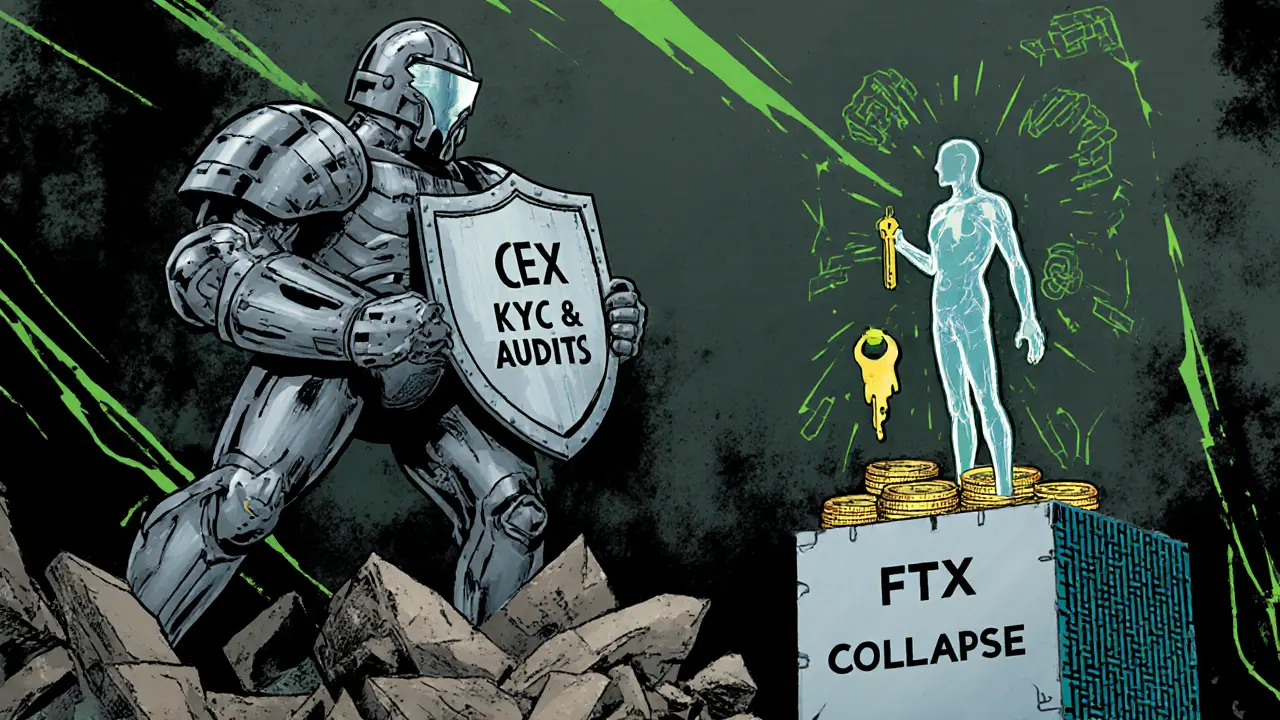
Security: Who’s Safer?
This is where the debate gets messy. CEXs have been hacked over 56 times since 2011, losing $4.7 billion total. Mt. Gox, QuadrigaCX, FTX-all collapsed because centralized systems are single points of failure. Even with cold storage, insiders can steal. Regulators can seize assets. You’re always one CEO decision away from losing everything. DEXs don’t get hacked the same way. There’s no central server to breach. But smart contracts can be buggy. In 2022, the Wormhole bridge exploit drained $320 million because of a flaw in the code. DEXs rely on code, and code can fail. The difference? With a DEX, your loss is limited to the transaction you made. No one else’s funds are at risk. With a CEX, one breach can wipe out thousands of users. DEXs also have fewer regulatory targets. The SEC sued Uniswap Labs in 2024, claiming it operated an unregistered exchange. But the DEX protocol itself? Still running. You can still trade. That’s censorship resistance.Speed and Cost: Who’s Faster and Cheaper?
CEXs are fast. Orders match in milliseconds. Withdrawals take minutes to hours, depending on the network. DEXs depend on the blockchain. On Ethereum mainnet, a trade might take 15-30 seconds. During congestion? Five minutes or more. Gas fees can spike to $50+. That’s why Layer-2s matter. On Arbitrum or zkSync, DEX trades now cost under $1.27 on average in Q2 2025. Fees are another contrast. Coinbase charges 0.00%-0.60% per trade, plus 1% for fiat deposits. Kraken’s fees are similar. DEXs charge 0.01%-1.0% pool fees, plus gas. But gas is variable. On Polygon, you might pay 10 cents. On Ethereum? $5. It’s unpredictable. For small, frequent trades, CEXs are cheaper. For large, infrequent swaps, DEXs win if you’re on a low-fee chain.User Experience: Easy or Powerful?
CEXs are designed for beginners. Sign up, deposit, trade, withdraw. Done. Coinbase’s interface is clean. Their help center scores 87/100 in technical documentation. Customer support responds in under 18 minutes. DEXs? They’re powerful-but intimidating. You need a wallet. You need to understand gas. You need to set slippage tolerance. You need to approve token spending. MetaMask’s 2025 survey found 62% of new users needed three or more tries to complete their first swap. Seed phrase mismanagement caused 78% of support tickets. The learning curve is steep. MintLayer estimates 2-3 hours to learn a CEX. For a DEX? 15-20 hours. That’s why most people stick with CEXs. But those who stick with DEXs? They’re more independent. A 2025 DappRadar report showed DEX users hold 8.7 tokens on average-nearly four times more than CEX users.
Regulation: Who’s Playing by the Rules?
CEXs are under heavy regulation. MiCA, the EU’s crypto law, forced 37% of unregulated exchanges out of Europe in 2024. Kraken holds over 40 licenses worldwide. Coinbase complies with AML, KYC, and reporting rules in 50+ countries. DEXs? They’re in legal gray zones. The SEC says many DEXs are unregistered securities exchanges. But who do you sue? The code? The developers? The liquidity providers? No one’s clearly in charge. That’s why DEXs are harder to shut down. But it’s also why banks won’t work with them. You can’t link your Chase account to Uniswap. You can’t pay taxes with a DEX statement. That limits mainstream use.Hybrid Models: The Future Is Blended
The line between CEX and DEX is blurring. Coinbase now lets users trade directly from their wallets on Base-a Layer-2 chain. That’s a hybrid: you use a familiar interface, but your funds stay in your control. Other platforms are doing the same. Some CEXs now offer non-custodial trading options. DEX aggregators are adding fiat on-ramps. The goal? Bring the ease of CEXs with the security of DEXs. Gartner predicts that by 2027, CEXs will handle 80% of retail volume-but DEXs will process 65% of institutional DeFi trades. That’s not a war. That’s coexistence.Which One Should You Use?
Use a centralized exchange if:- You’re new to crypto
- You want to buy with a credit card or bank transfer
- You trade large amounts regularly
- You need customer support when things go wrong
- You own crypto already and know how to manage a wallet
- You want full control over your funds
- You’re trading obscure tokens not listed on CEXs
- You live in a country with banking restrictions
- You value privacy and censorship resistance
Are decentralized exchanges safer than centralized ones?
It depends. Centralized exchanges have been hacked for billions in total, but they use cold storage and audits. Decentralized exchanges don’t hold your funds, so no central breach can steal everything-but smart contracts can have bugs. If you lose your private key on a DEX, there’s no recovery. On a CEX, you can reset your password. Neither is perfectly safe. DEXs protect you from corporate failure; CEXs protect you from user error.
Can I use a DEX without owning any crypto?
No. DEXs require you to already have cryptocurrency in a non-custodial wallet like MetaMask. You can’t deposit USD or EUR directly. To buy crypto with fiat, you need a CEX first, then transfer to your wallet before using a DEX. Some DEX aggregators now offer fiat on-ramps, but they’re rare and still route through CEXs behind the scenes.
Why do DEXs have higher slippage than CEXs?
Slippage happens because DEXs use liquidity pools, not order books. If a pool has low volume for a token, even a small trade can move the price. CEXs have deep order books with hundreds of buyers and sellers, so prices stay stable. On a DEX, if you trade 100 ETH from a pool with only 500 ETH total, you’ll get a worse rate. Always set a slippage tolerance-usually 0.5%-1% for major pairs, up to 5% for small tokens.
Do I need to pay gas fees on both CEXs and DEXs?
Only on DEXs. On a CEX, you trade within their system-they cover the blockchain costs internally. When you withdraw crypto from a CEX, you pay gas then. On a DEX, every trade (approval, swap, withdrawal) requires a blockchain transaction, so you pay gas each time. That’s why Layer-2 DEXs like Arbitrum or Polygon are so popular-they cut gas by 90%.
Are DEXs legal everywhere?
No. While DEXs operate on open blockchains, some countries ban them outright. In 2025, 18 countries restricted smart contract interactions, including China, India (for certain types), and parts of the Middle East. The SEC in the U.S. is actively suing DEX platforms, claiming they’re unregistered exchanges. You can still use them, but you’re doing so at your own legal risk. Always check local laws before trading.
What’s the biggest risk of using a CEX?
The biggest risk is that the exchange can freeze your funds, seize your assets, or go bankrupt. You don’t own your private keys-you’re a customer. If the exchange gets hacked, regulated, or collapses (like FTX), your money is at risk. Even if they claim to be “100% reserve-backed,” there’s no guarantee they’re telling the truth. That’s why experts say: “Not your keys, not your crypto.”
Can I use DEXs for derivatives like futures or leverage?
Yes-but it’s limited. Most DEXs only support spot trading. Some, like dYdX and GMX, offer perpetual futures and leverage, but they’re niche. The vast majority of derivatives trading still happens on CEXs like Binance and Bybit, which have deeper liquidity and better risk controls. If you’re trading leveraged positions, a CEX is still the safer, more reliable option.
Cormac Riverton
I'm a blockchain analyst and private investor specializing in cryptocurrencies and equity markets. I research tokenomics, on-chain data, and market microstructure, and advise startups on exchange listings. I also write practical explainers and strategy notes for retail traders and fund teams. My work blends quantitative analysis with clear storytelling to make complex systems understandable.
About
DEX Maniac is your hub for blockchain knowledge, cryptocurrencies, and global markets. Explore guides on crypto coins, DeFi, and decentralized exchanges with clear, actionable insights. Compare crypto exchanges, track airdrop opportunities, and follow timely market analysis across crypto and stocks. Stay informed with curated news, tools, and insights for smarter decisions.

